A route concept study on the Hanover - Bielefeld connection
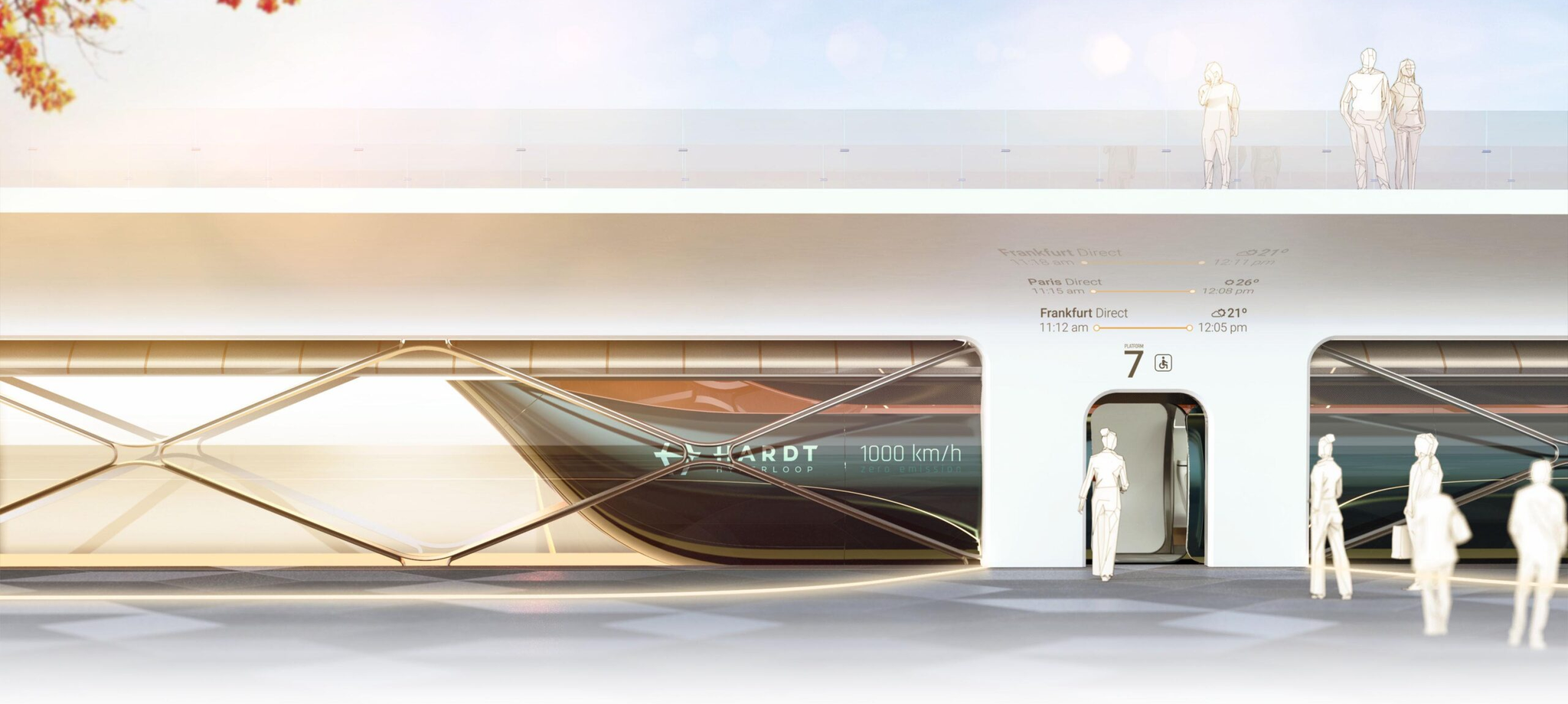
This study is a collaboration between Deutsche Bahn Engineering & Consulting and Hardt Hyperloop to compare the potential of hyperloop with high-speed rail (HSR) and maglev systems to upgrade the Hanover-Bielefeld rail corridor in Germany. The study aims to determine whether hyperloop has strategic merit as an alternative to the current upgrade options, considering factors such as reducing travel times, expanding commutable access to labor markets, developing a zero-emissions concept, generating new jobs, and developing a scalable concept of operations. The study includes the development of a hyperloop corridor between Hanover and Bielefeld, specification of optimal hyperloop fleet/vehicle type and configuration for passenger and cargo operations, and specification of a hyperloop service/operational concept for the fleet and hubs along the corridor. The study also presents three possible route alignments for the hyperloop corridor, with proposed hubs for passenger and cargo in locations along the corridor and across a full-network scenario.
Strategic context
Deutsche Bahn Netze is planning to upgrade the Hanover-Bielefeld corridor, connecting major cities in Germany's Ruhr region with Hanover and Berlin. The upgrade aims to resolve capacity constraints, reduce corridor run times, increase speeds up to 300 km/h, ensure sufficient access for rail freight, and maximize investment benefits relative to costs. The current benefit-cost ratio (BCR) is 1.04 as part of a broader package of works to deliver the Deutschlandtakt.
DB Engineering & Consulting has collaborated with Hardt to compare hyperloop with HSR and Maglev systems as an emerging mode of transport that can unlock broader European mobility objectives. The study's assumptions and findings have been incorporated into this concept.
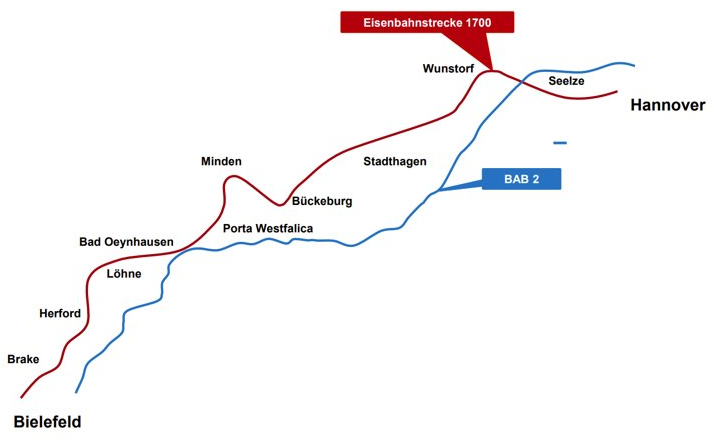
Challenges and opportunities
The future of mobility in Europe will be shaped by a variety of megatrends, including rising inequality, resource scarcity, continuing urbanization, demographic imbalances, changing nature of work, technological change and hyperconnectivity, climate change and environmental degradation, growing consumerism, shifting health challenges, and diversification of education and training.
These megatrends have several implications for the future of mobility in Europe, including:
- People will have higher expectations for transport services, expecting them to be ultra-fast, reliable, and seamless, even across borders.
- Breakthroughs in technology will accelerate changes in global economies, making workforces more flexible and enabling people to adopt a wider range of lifestyles.
- Opportunities will arise for leaner, more sustainable alternatives to short-haul flights, which can help move Europe towards a single commuter catchment.
However, there are also challenges to be addressed in the transportation industry, such as operational complexity, property impacts, and economic integration. For example, duplicating paths and services can create complex interactions and dependencies that can lead to future performance issues, and high-speed rail corridors require significant land acquisition that can impact existing properties and the natural environment.
A hyperconnected Europe will play a crucial role in the future of mobility, and Central Europe will be pivotal to its success. The Hannover - Bielefeld corridor is expected to play a primary role in through-routing and switching for long-distance trips, enabling seamless switching of services without the need for passengers to change trains.
In conclusion, the future of mobility in Europe is complex and multifaceted, with various megatrends shaping its trajectory. Addressing the challenges and opportunities that arise from these megatrends will be essential to creating a sustainable and efficient transport system that meets the expectations of European citizens.
Project definition
The goal of this research was to evaluate the strategic merit of hyperloop as a potential alternative to high-speed rail options. To achieve this goal, the following objectives and scope were identified:
Objectives
- Reduce travel times for local journeys within Germany and long-distance journeys across Europe.
- Develop a zero emissions concept that is leaner in physical footprint, lower in cost, and preserves the natural environment.
- Expand Germany’s commutable access to labor markets and leverage its proximity to neighboring economies.
- Generate new jobs through construction and the associated economic agglomeration benefits of the corridor.
- Develop a simple and scalable concept of operations that is responsive to the real-time demands of passengers or cargo, and compliments existing rail services.
The scope includes
- Development of a hyperloop corridor between Hanover and Bielefeld.
- Development of hyperloop hubs for passengers and cargo in locations along the corridor, and across a full-network scenario (integrated into existing airports and rail stations).
- Specification of an optimal hyperloop fleet/vehicle type and configuration for passenger and cargo operations in the corridor (under a local and full European network scenario).
- Specification of a hyperloop service/operational concept for the fleet and hubs along the corridor.
Route
The proposed hubs are presented in a table below, followed by a three maps of possible alignments for the routes.
No | Hub | City | Type |
1 | Hannover Airport | Hanover | Cargo |
2 | Nordhafen | Hanover | Cargo |
3 | Hannover Airport | Hanover | Passenger |
4 | Hannover Messe | Hanover | Passenger |
5 | Bielefeld Airport | Bielefeld | Passenger |
6 | Bielefeld Airport | Bielefeld | Cargo |
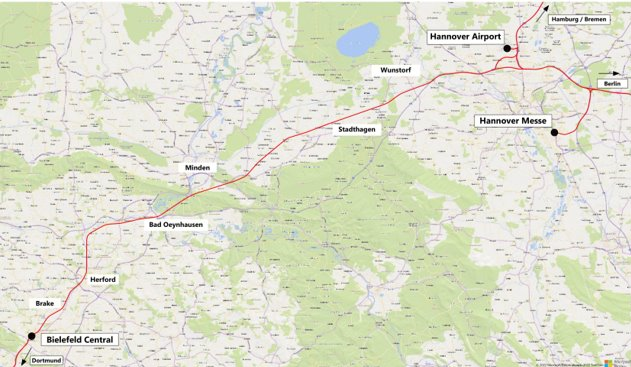

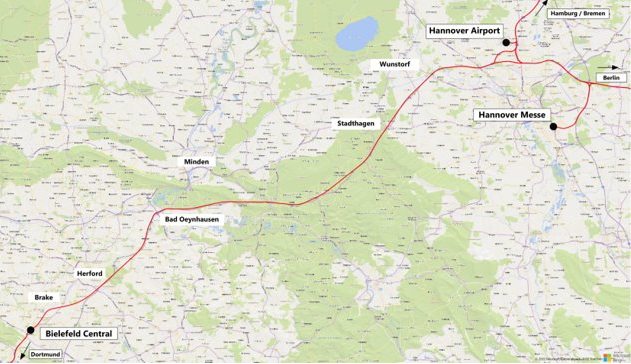
Expected demand
Passenger demand for hyperloop was estimated based on the commuters between Hanover and Bielefeld, with additional traffic added from network effects via the assignment of European aviation flows on the hyperloop network. In 2019, 83.3% of passenger trips were covered by car, and the hyperloop modal shift model was calibrated to closely approach this reality. Private costs equal to €0.27 per kilometer traveled were added in addition to the cost of driving, making the total costs of car use amount to €0.52 per kilometer considering the expenses on fuel.
With the introduction of hyperloop, the results showed a modal shift of 21.4% of car trips towards hyperloop and an additional 11.9% of demand from rail. Overall, it is expected that this stretch of the European hyperloop network will support about 214.43 million trips per annum as of 2050, with the majority of hyperloop's traffic originating from aviation and serving mostly as a facilitator of the European hyperloop traffic.
The expected demand for hyperloop as of 2030 amounts to 391.8 thousand passengers. However, as of 2050, that number is projected to grow significantly to 214.43 million passengers per annum, indicating a substantial potential market for hyperloop technology in the European transportation sector.
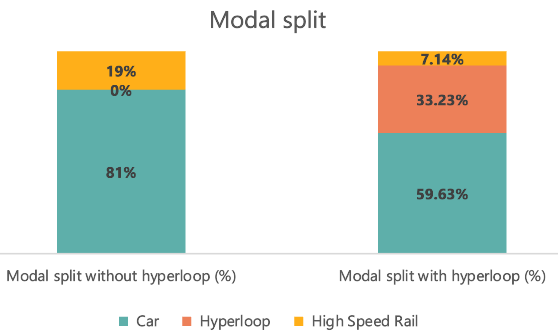
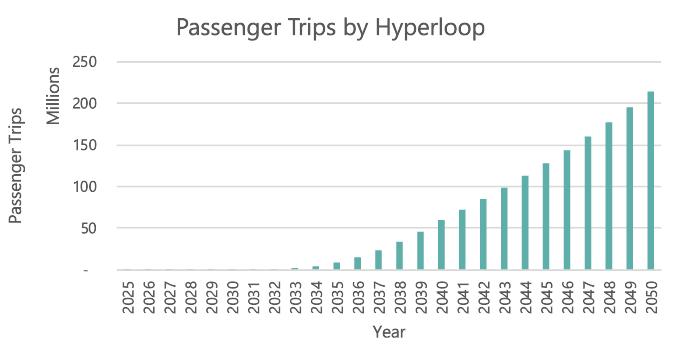
Costing and performance
The hyperloop project has the potential to generate approximately 47,000 jobs, including 29,000 direct jobs, 11,000 indirect jobs, and 6,000 induced jobs. Furthermore, the project is expected to contribute to a net reduction of 51 million tons of CO2 emissions. Two tables below illustrate the costs and benefits of various proposed routes.
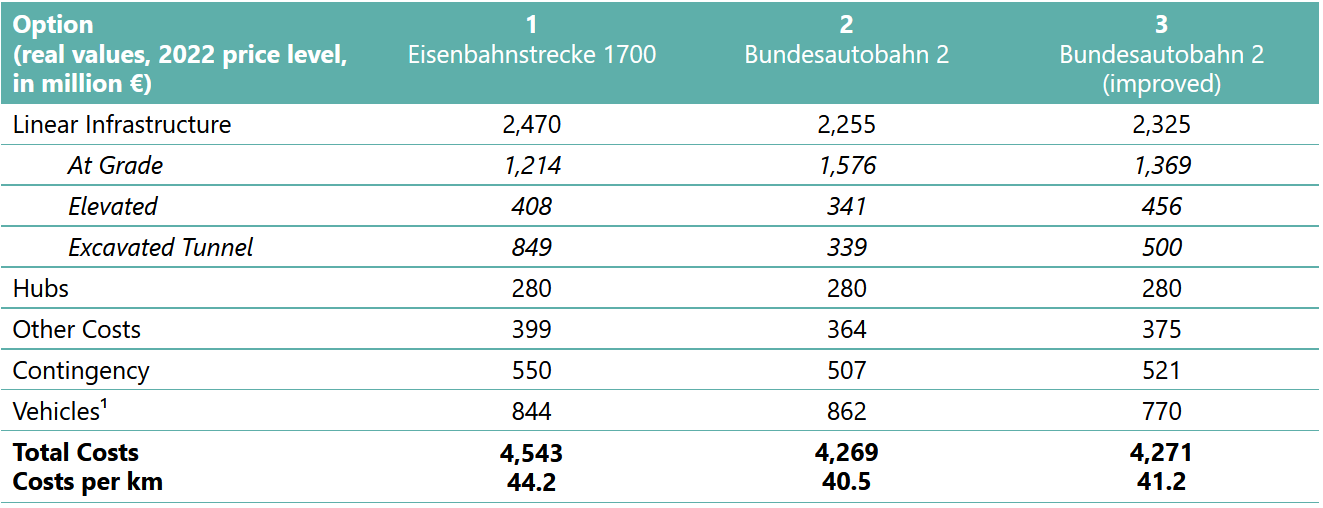

Conclusions and recommendations
Based on the project's objectives and analysis, the report concludes that hyperloop technology has the potential to significantly transform transportation in the region and offers a compelling alternative to existing high-speed rail options. The project aligns with government efforts to support economic growth and reduce carbon emissions in transportation.
The report recommends that hyperloop technology should be considered as a potential option for creating high-speed and high-capacity transport infrastructure between Hanover and Bielefeld. It also suggests initiating a pre-feasibility study to further assess the relative merits of this option. Overall, the report highlights the potential benefits of hyperloop technology and encourages further exploration and consideration of this innovative transportation solution.
Acknowledgements

